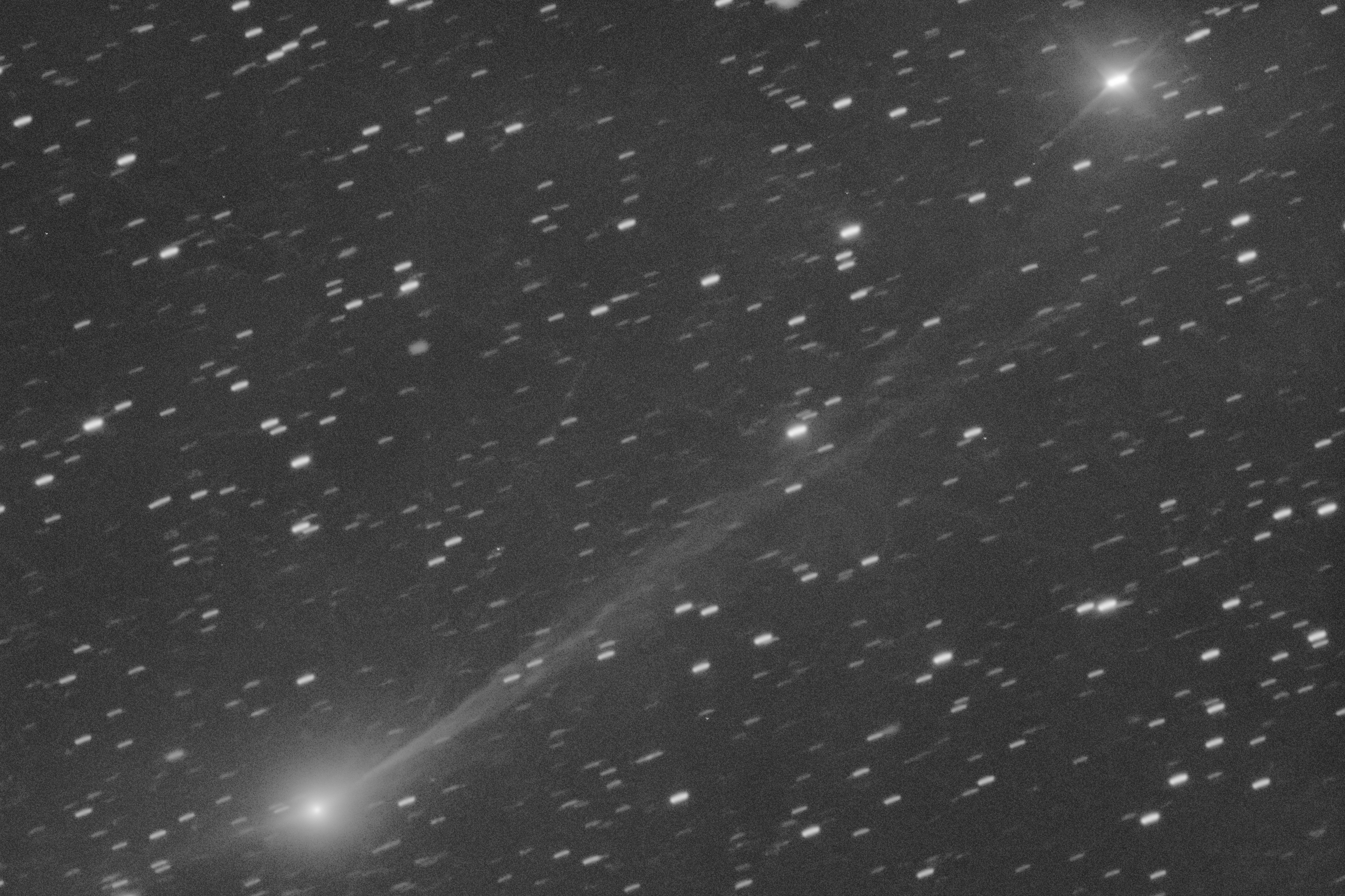
Three NASA spacecraft on and near the red planet zoomed in on the comet as it passed just 29 million kilometres away, revealing a fuzzy white blob.
NASA has unveiled close-up pictures of the interstellar comet that’s making a quick one-and-done tour of the solar system.
Discovered over the summer, the comet known as 3I/Atlas is only the third confirmed object to visit our corner of the cosmos from another star.
It zipped harmlessly past Mars last month.
READ MORE: 'AI bubble' fears eased as world's most valuable company clears hurdle

Three NASA spacecraft on and near the red planet zoomed in on the comet as it passed just 29 million kilometres away, revealing a fuzzy white blob.
The European Space Agency's two satellites around Mars also made observations.
Other NASA spacecraft will remain on the lookout in the weeks ahead, including the Webb Space Telescope.
At the same time, astronomers are aiming their ground telescopes at the approaching comet, which is about 307 million kilometres from Earth.
The Virtual Telescope Project's Gianluca Masi zoomed in today from Italy.
The comet is visible from Earth in the predawn sky by using binoculars or a telescope.
READ MORE: 'Rapidly intensifying': Cyclone turns towards land in dramatic shift
“Everyone that is in control of a telescope wants to look at it because it's a fascinating and rare opportunity," NASA acting astrophysics director Shawn Domagal-Goldman said.
The closest the comet will come to Earth is 269 million kilometres in mid-December.
Then it will hightail it back into interstellar space, never to return.
ESA’s Juice spacecraft, bound for Jupiter, has been training its cameras and scientific instruments on the comet all month, particularly after it made its closest pass to the sun.
But scientists won’t get any of these observations back until February because Juice’s main antenna is serving as a heat shield while it’s near the sun, limiting the flow of data.
Named for the telescope in Chile that first spotted it, the comet is believed to be anywhere from 440 metres across to 5.6 kilometres across.
READ MORE: One disease wiped out Steph's family in a year. Survival rates have barely changed
Observations indicate that the exceptionally fast-moving comet may have originated in a star system older than our own, “which gives me goose bumps to think about,” NASA scientist Tom Statler said.
“That means that 3I/Atlas is not just a window into another solar system, it’s a window into the deep past and so deep in the past that it predates even the formation of our Earth and our sun," Statler told reporters.
NASA officials were quick to dispel rumors that this friendly solar system visitor, as they called it, might be an alien ship of some sort.
They said that because of the federal government shutdown, they weren't able to respond to all the theories cropping up in recent weeks.
The space agency is always on the hunt for life beyond Earth, "but 3I/Atlas is a comet," said NASA’s associate administrator, Amit Kshatriya.
DOWNLOAD THE 9NEWS APP: Stay across all the latest in breaking news, sport, politics and the weather via our news app and get notifications sent straight to your smartphone. Available on the Apple App Store and Google Play.
 Qantas and Virgin Australia to ban use of power banks on flights
Qantas and Virgin Australia to ban use of power banks on flights
 Prominent neo-Nazi charged over alleged online harassment of federal MP
Prominent neo-Nazi charged over alleged online harassment of federal MP
 Slain police officer's father shares grief as Wieambilla inquest ends
Slain police officer's father shares grief as Wieambilla inquest ends
 Victorian MP details sexual harassment inside parliament
Victorian MP details sexual harassment inside parliament
 SA names joint Senior Australians of the Year after awards night debacle
SA names joint Senior Australians of the Year after awards night debacle
 NSW Opposition Leader Mark Speakman quits after colleagues turn against him
NSW Opposition Leader Mark Speakman quits after colleagues turn against him
 'Obscene': SA premier hits out after missing out on major conference
'Obscene': SA premier hits out after missing out on major conference
 Woman hospitalised after being struck by wrench thrown in brawl in Sydney's east
Woman hospitalised after being struck by wrench thrown in brawl in Sydney's east
 Liz and Julie didn't plan on giving birth in their late 40s. They say it made them better mums
Liz and Julie didn't plan on giving birth in their late 40s. They say it made them better mums
 When Adam applied for an entry-level job, he found himself up against 6500 others
When Adam applied for an entry-level job, he found himself up against 6500 others
 Brief reprieve before Cyclone Fina strengthens, heads towards NT coast
Brief reprieve before Cyclone Fina strengthens, heads towards NT coast
 Major discovery proves gigantic sharks roamed Australia's coastlines
Major discovery proves gigantic sharks roamed Australia's coastlines
 Highly infectious, deadly disease 'likely circulating' in Sydney
Highly infectious, deadly disease 'likely circulating' in Sydney
 Aussies are being forced to accept jobs with no clue what they'll be paid
Aussies are being forced to accept jobs with no clue what they'll be paid
 One of Australia's biggest customers ditches our biggest export
One of Australia's biggest customers ditches our biggest export
 'Asbestos of the 21st century': Calls to ban chemical Aussies are exposed to every day
'Asbestos of the 21st century': Calls to ban chemical Aussies are exposed to every day
 Warning entire industry critical for Australian economy on the brink of collapse
Warning entire industry critical for Australian economy on the brink of collapse






